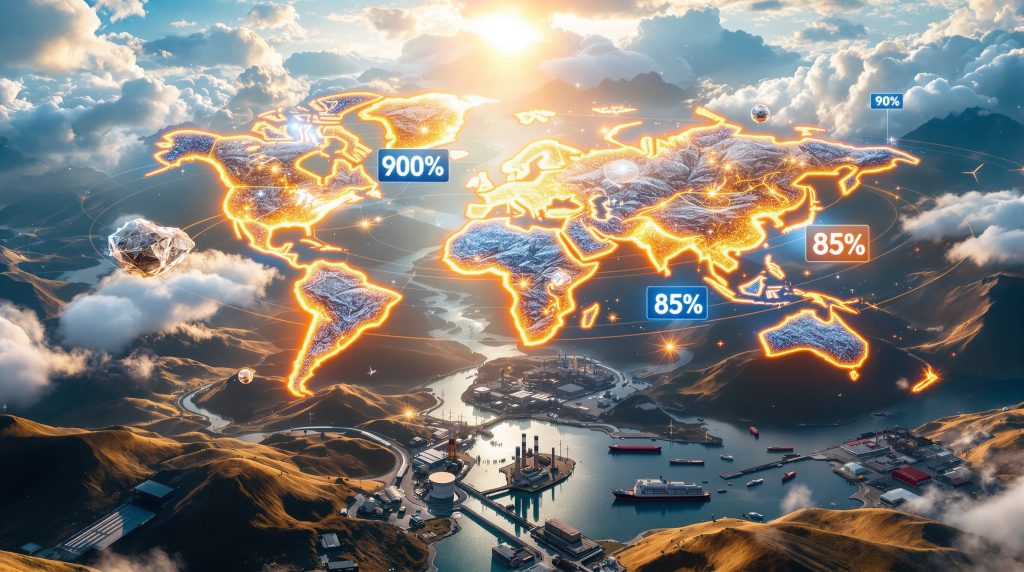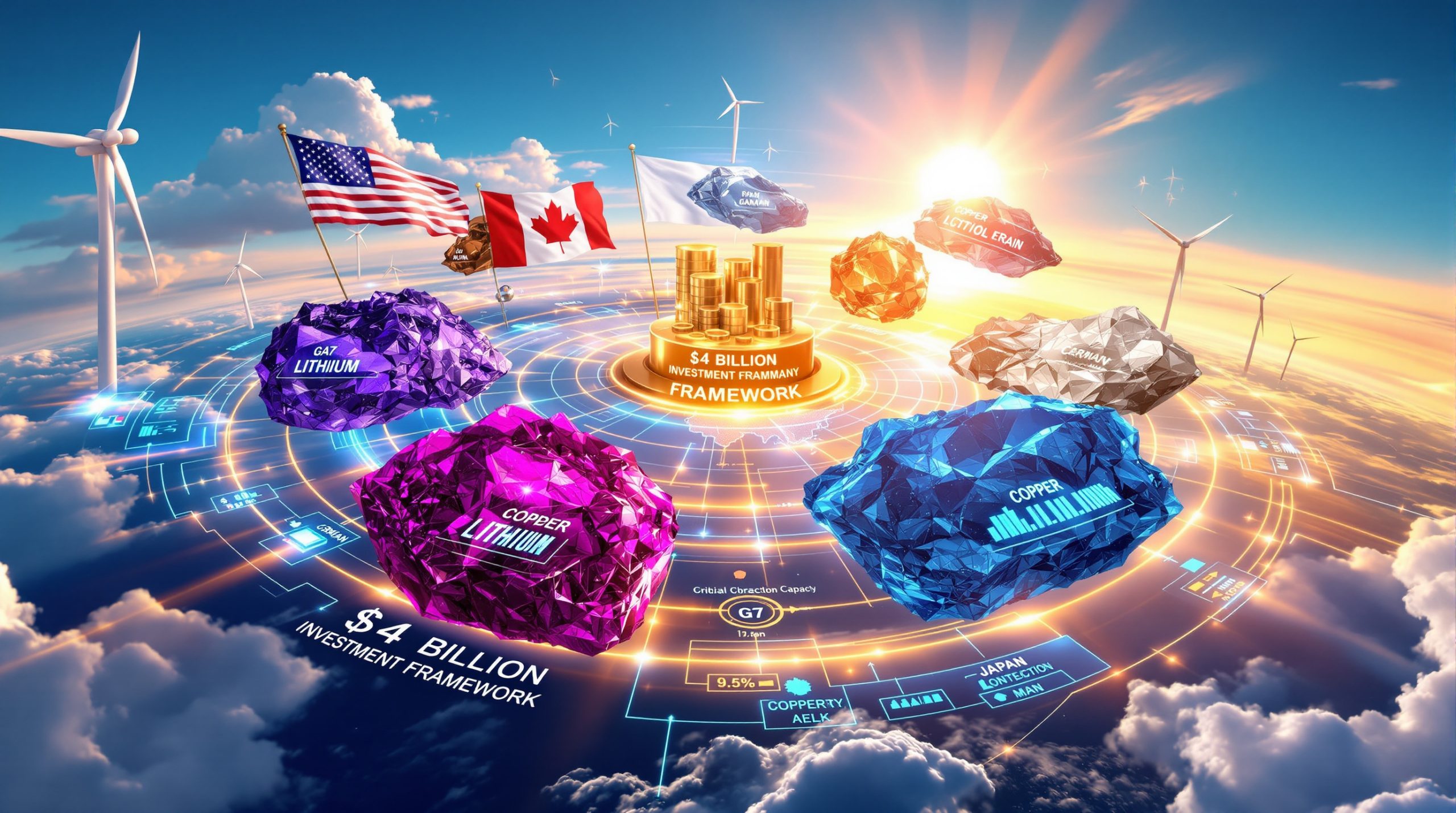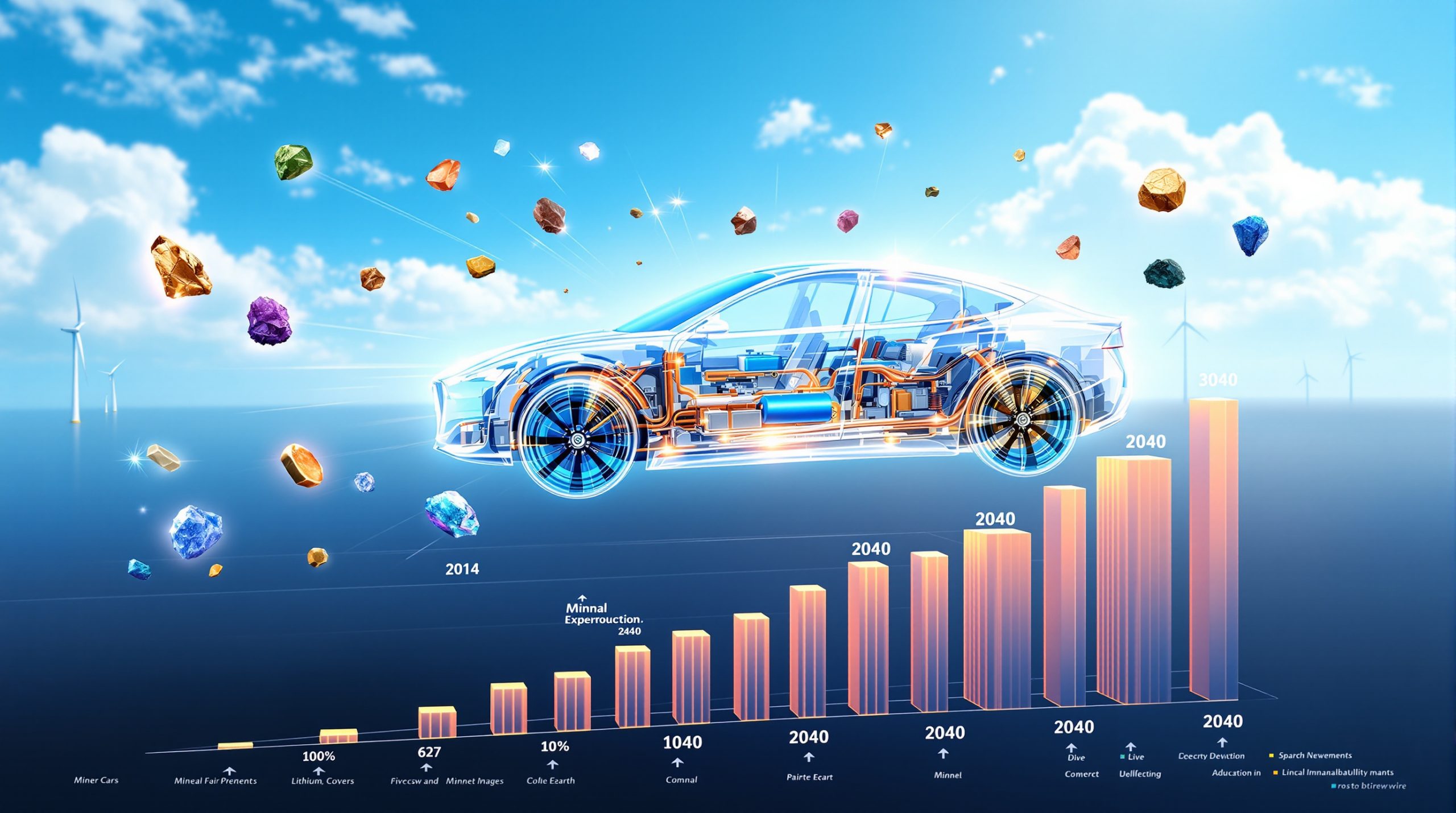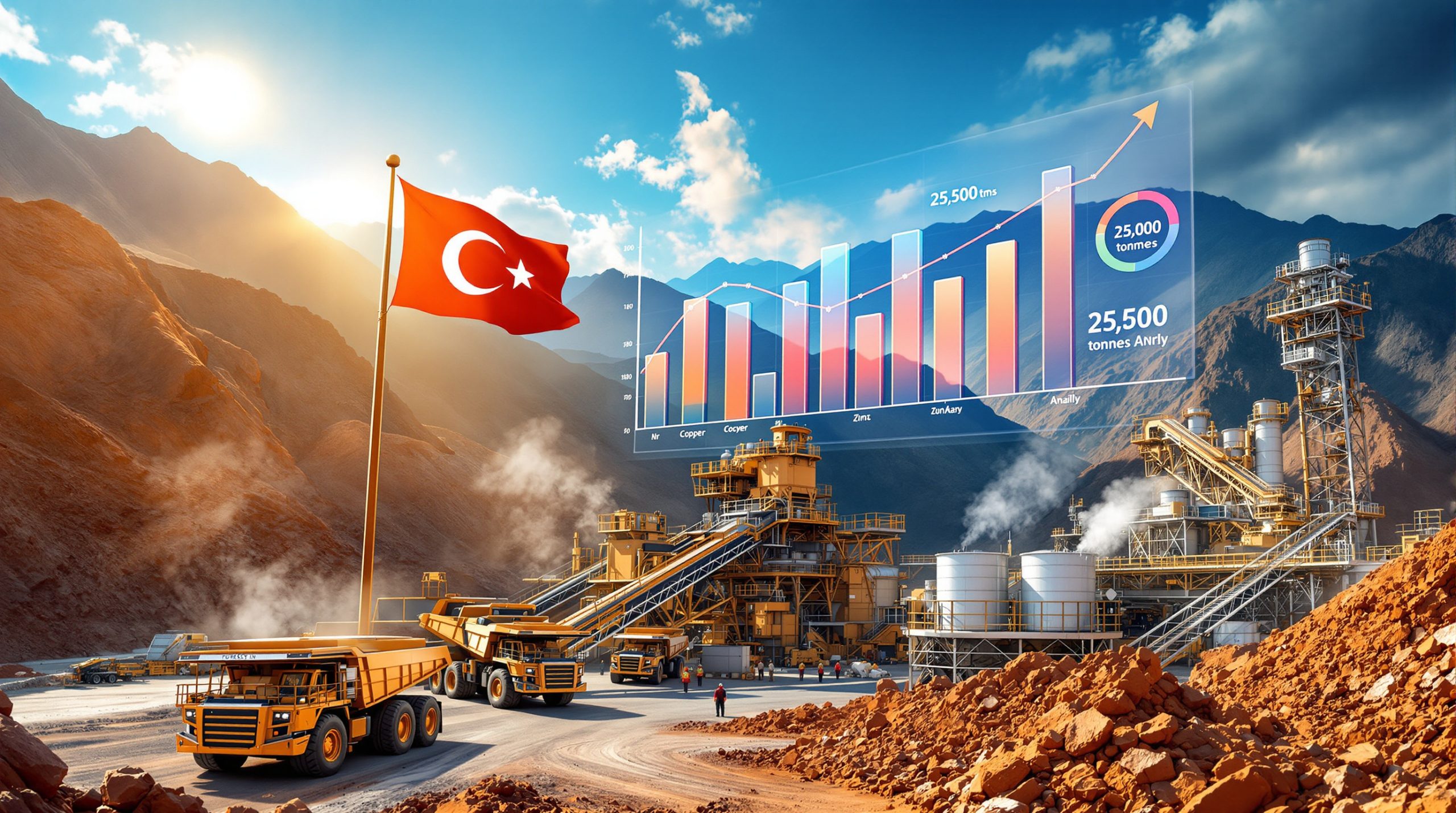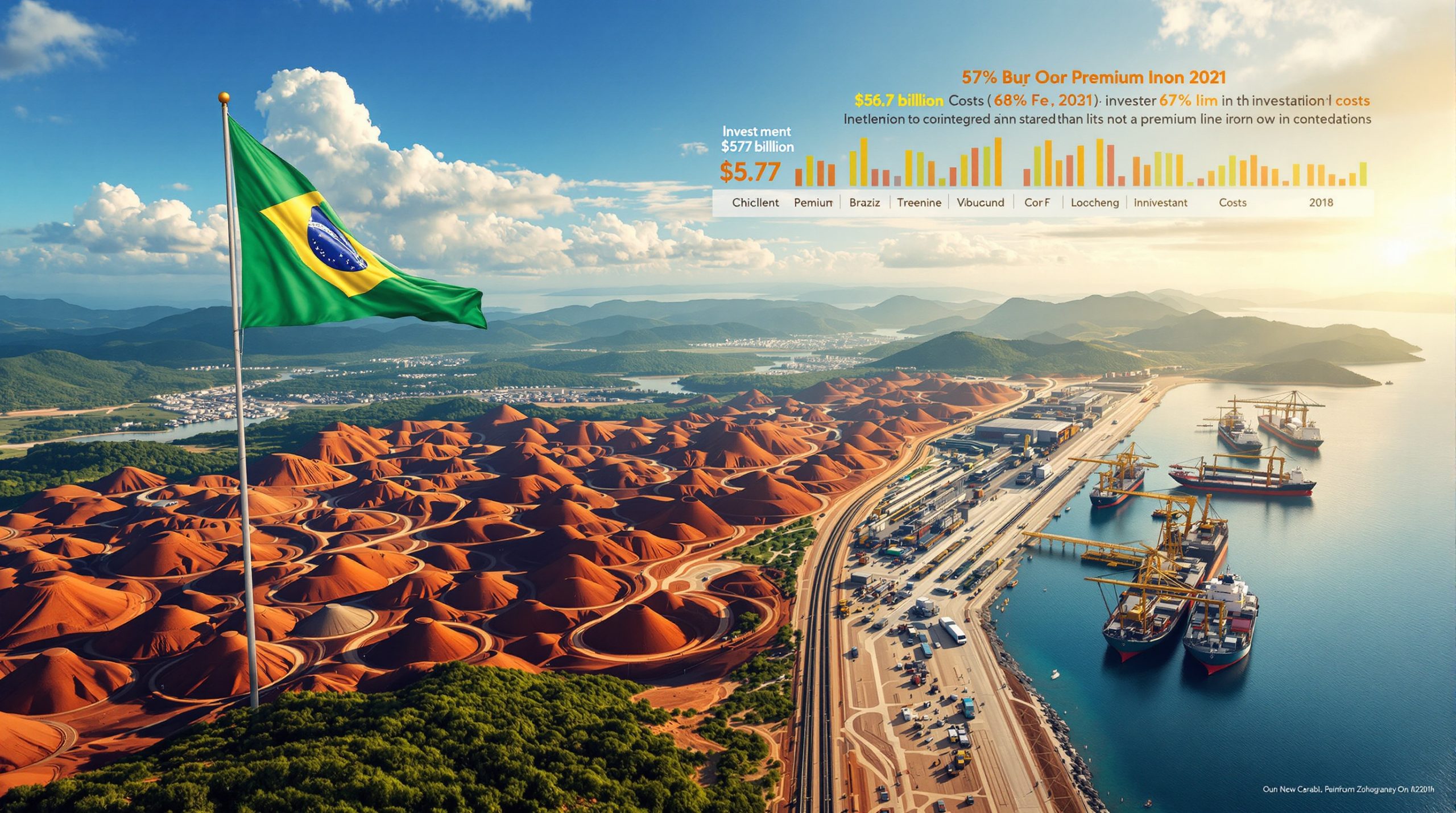Understanding China's Strategic Position in Global Critical Minerals Markets
The Trump-Xi trade truce on rare earth stability represents a pivotal moment in rare earth diplomacy, but understanding its true significance requires examining China's entrenched position across critical minerals supply chains. Beyond the headlines of temporary détente lies a complex web of processing dominance that extends far deeper than raw material extraction.
China's market control spans multiple critical stages of rare earth production. The nation processes approximately 92% of global rare earth elements, while maintaining 87% of permanent magnet manufacturing capacity. This processing monopoly creates bottlenecks that no diplomatic agreement can immediately resolve, as Western manufacturers have discovered during recent supply chain disruptions.
The lithium sector reveals similar patterns of concentration. Chinese companies control 65% of global lithium processing capacity, with facilities in Chile, Australia, and domestic operations handling the majority of battery-grade lithium carbonate production. Furthermore, this innovative lithium extraction processing dominance means that even lithium extracted in Western nations often requires Chinese refining before reaching battery manufacturers.
Industry Reality: Processing infrastructure represents the true chokepoint in critical minerals supply chains, not raw material access.
Cobalt refining demonstrates another dimension of Chinese market control. The nation handles 72% of cobalt refining operations, processing material primarily sourced from Democratic Republic of Congo mines. Consequently, this global cobalt mining vertical integration strategy allows Chinese companies to control pricing and allocation across multiple battery metals simultaneously.
Market Dynamics Beyond Raw Materials
The rare earth sector's complexity extends beyond simple mining statistics. China's strategic advantage lies in its integrated supply chains that span from ore processing to finished magnet production. Neodymium-iron-boron (NdFeB) permanent magnets, essential for electric vehicles and wind turbines, require specialised metallurgical expertise that takes decades to develop.
Chinese processing facilities benefit from economies of scale that Western competitors struggle to match. The Baotou region alone processes over 100,000 tonnes of rare earth concentrates annually, more than the combined capacity of all non-Chinese facilities worldwide. This scale advantage translates into cost efficiencies of 30-40% compared to alternative suppliers.
Separation technology represents another critical barrier to market diversification. The chemical processes required to separate individual rare earth elements from mixed concentrates involve proprietary technologies developed over decades. China's solvent extraction capabilities can achieve purities exceeding 99.99%, while many Western facilities struggle to reach 99.5% purity levels consistently.
Export Control Mechanisms and Market Manipulation Strategies
China's export licensing regime operates through multiple administrative layers designed to maintain strategic flexibility. The Ministry of Commerce (MOFCOM) oversees export quotas, while the Ministry of Industry and Information Technology (MIIT) regulates production permits and environmental compliance standards.
Recent policy developments reveal sophisticated market management approaches:
- Administrative Licensing: New requirements for rare earth export permits processing through centralised approval systems
- Production Quotas: Annual rare earth mining limits allocated across six major state-controlled groups
- Technology Transfer Restrictions: Export controls on separation equipment and processing technologies
- Strategic Reserve Building: Government stockpiling operations affecting market availability
Pricing Psychology and Market Responses
Global manufacturers have adapted to Chinese export policies through several behavioural changes. Inventory management strategies have shifted dramatically, with companies maintaining 4-6 month stockpiles compared to traditional 30-45 day supply chains. This inventory building creates artificial demand spikes during periods of policy uncertainty.
Substitution research has accelerated across multiple applications. Automotive manufacturers are investigating ferrite magnets for certain motor applications, accepting performance trade-offs for supply security. However, wind turbine manufacturers are developing direct-drive systems that reduce rare earth magnet requirements by 20-30% compared to traditional geared turbines.
Recycling initiatives have gained momentum as companies seek alternative sources. End-of-life vehicle processing now recovers approximately 15% of neodymium and 12% of dysprosium from scrapped electric vehicles, though these volumes remain minimal compared to primary production requirements.
International Partnership Frameworks and Diversification Efforts
Western governments have launched comprehensive rare earth supply chain initiatives, though their effectiveness remains limited by geological and technological constraints. The CHIPS and Science Act allocated $52 billion for semiconductor manufacturing, including provisions for critical materials processing infrastructure.
Recent Partnership Investment Commitments:
| Partnership | Focus Area | Investment Amount | Operational Timeline |
|---|---|---|---|
| U.S.-Japan Critical Materials | Processing facilities | $3.2 billion | 2026-2029 |
| U.S.-Australia Minerals Security | Mining expansion | $2.4 billion | 2025-2028 |
| U.S.-Canada Defence Production | Refining capacity | $1.1 billion | 2025-2027 |
| EU-Greenland Strategic Materials | Exploration & development | $1.8 billion | 2027-2031 |
European Union Critical Raw Materials Strategy
The EU's Critical Raw Materials Act represents the most comprehensive non-Chinese supply chain development initiative. In addition, this European CRM facility target objectives include:
- 10% domestic extraction capacity by 2030
- 40% domestic processing capability across critical materials
- 25% recycling rate improvements for rare earth elements
- Strategic partnerships with 18 resource-rich nations
However, geological reality constrains European ambitions. Heavy rare earth deposits remain concentrated in China and Southeast Asia, with minimal viable resources identified within EU territories. Dysprosium and terbium, critical for high-performance magnets, show particularly limited alternative sourcing options.
Trump-Xi Trade Truce: Temporary Stability or Strategic Reset?
The diplomatic framework emerging from Kuala Lumpur negotiations offers conditional rare earth supply stability in exchange for broader economic concessions. China's willingness to delay export licensing implementation suggests recognition that excessive supply disruption could accelerate Western diversification efforts beyond Chinese control.
Market Impact Analysis:
Price Volatility Reduction:
- Rare earth oxide prices: 18-28% stabilisation during diplomatic engagement periods
- Neodymium metal: 15-22% price moderation following trade agreements
- Dysprosium oxide: 25-35% reduced volatility during détente phases
Investment Flow Modifications:
- Delayed non-Chinese project financing during cooperation periods
- Increased speculative positioning in Chinese rare earth stocks
- Modified long-term supply contract negotiations
Strategic Calculation Behind Chinese Flexibility
China's temporary export policy moderation reflects calculated geopolitical positioning. Excessive supply restrictions risk accelerating Western technological independence, while controlled availability maintains dependency relationships. The proposed 12-month delay allows Chinese policymakers to assess Western diversification progress while preserving leverage.
Soybean diplomacy integration demonstrates China's multi-sector negotiation approach. Agricultural imports worth $24-28 billion annually provide significant economic incentives for rare earth cooperation, creating cross-sector interdependencies that complicate unilateral policy decisions. For instance, this China-US trade agreement demonstrates how both sides recognise the interconnected nature of global supply chains.
Industry Sector Vulnerabilities and Adaptation Strategies
Electric Vehicle Manufacturing Dependencies
EV supply chains exhibit severe concentration risks across multiple critical materials. Battery cathode production relies 82% on Chinese processing, while permanent magnet motors source 94% of rare earth content from Chinese suppliers. These dependencies create systematic vulnerabilities that temporary trade agreements cannot resolve.
Adaptation Initiatives:
- Vertical Integration: Tesla's lithium processing partnerships in Nevada and Chile
- Alternative Chemistries: Ford's adoption of lithium iron phosphate (LFP) batteries reducing cobalt dependency
- Magnet-Free Designs: BMW's development of synchronous reluctance motors eliminating rare earth requirements
Semiconductor Industry Exposure
Advanced semiconductor manufacturing requires high-purity rare earth compounds for specialised applications. Europium and yttrium compounds essential for LED production source 96% from Chinese refineries. Lanthanum used in camera lenses and optical applications shows 91% Chinese processing dominance.
Supply Chain Modifications:
- Extended Inventory Cycles: Six-month minimum stockpiles for critical compounds
- Alternative Sourcing: Investment in Malaysian and Vietnamese processing capabilities
- Technology Substitution: Research into non-rare earth optical materials
- Strategic Partnerships: Direct supplier relationships bypassing trading intermediaries
Geological Realities and Processing Constraints
Alternative rare earth development faces fundamental geological limitations that diplomatic agreements cannot overcome. Heavy rare earth elements (HREEs) including dysprosium, terbium, and holmium concentrate in clay-type deposits primarily located in southern China and Myanmar border regions.
Global Heavy Rare Earth Resources:
- China: 85% of identified HREE reserves
- Myanmar: 8% (politically unstable, export restricted)
- Australia: 4% (mostly light rare earths with minimal HREE content)
- Other regions: 3% (uneconomic concentrations)
Furthermore, the significance of Greenland critical minerals offers potential diversification opportunities, though these remain years away from commercial production.
Processing Technology Barriers
Rare earth separation technology represents decades of accumulated expertise that cannot be rapidly replicated. Solvent extraction systems require precise chemical engineering knowledge, with cascade designs involving 50-100 individual separation stages for high-purity products.
Technical Challenges for Non-Chinese Processing:
- Acid consumption: 8-12 tonnes of sulfuric acid per tonne of rare earth oxides
- Waste generation: 200-300 tonnes of radioactive tailings per tonne of product
- Energy intensity: 45-60 MWh per tonne of separated rare earth oxides
- Skilled workforce: 15-20 years training for senior separation engineers
Investment Implications and Risk Assessment Framework
The Trump-Xi trade truce on rare earth stability creates complex investment dynamics requiring sophisticated risk evaluation. Temporary price stabilisation may reduce immediate supply chain costs while potentially delaying essential diversification investments that provide long-term security.
Scenario Planning for Critical Minerals Investors
Cooperation Extension Scenario (25% probability):
- Multi-year trade agreements with rare earth provisions
- Collaborative technology development programmes
- Reduced export licensing restrictions
- Sustained price stabilisation across commodity categories
Managed Competition Scenario (55% probability):
- Continued strategic rivalry with periodic cooperation
- Parallel supply chain development by both sides
- Selective technology sharing limitations
- Cyclical price volatility based on diplomatic relations
Strategic Decoupling Scenario (20% probability):
- Comprehensive export restrictions on critical materials
- Technology transfer prohibition enforcement
- Emergency stockpiling by major consuming nations
- Dramatic price increases reaching 200-400% premiums
Portfolio Positioning Strategies
Diversification Hedge Positioning:
- Maintain exposure to non-Chinese rare earth development projects
- Invest in recycling technology companies with scalable operations
- Position in alternative material research and development firms
- Allocate capital to strategic mineral stockpiling opportunities
Technology Substitution Plays:
- Magnet-free motor technology developers
- Advanced recycling and urban mining companies
- Alternative battery chemistry manufacturers
- Synthetic rare earth research initiatives
Future Market Evolution and Strategic Recommendations
The Trump-Xi trade truce on rare earth stability provides temporary market stability while underlying structural dependencies remain unchanged. Twelve-month diplomatic windows offer insufficient time for meaningful supply chain diversification, though they may enable critical project financing and technology development initiatives.
Consequently, the broader implications for critical minerals energy transition require sustained investment regardless of temporary diplomatic agreements.
Critical Success Factors for Alternative Supply Development:
- Sustained Political Support: Multi-decade commitment transcending electoral cycles
- Technology Transfer: Access to proprietary separation and processing knowledge
- Capital Allocation: $15-25 billion investment requirements for meaningful capacity
- Workforce Development: Specialised technical education and training programmes
- Environmental Management: Advanced waste processing and containment systems
Long-term Strategic Imperatives
Regardless of diplomatic developments, Western economies must pursue supply chain diversification for national security reasons. Critical infrastructure dependencies on single-source suppliers create systematic vulnerabilities that temporary trade agreements cannot address.
Investment Priorities:
- Processing Infrastructure: Focus on separation and purification capabilities
- Recycling Technology: Urban mining and end-of-life product recovery
- Alternative Materials: Substitution research and development programmes
- Strategic Partnerships: Long-term supply agreements with reliable partners
The rare earth sector's future depends less on diplomatic negotiations than on technological innovation and industrial capacity development. However, recent US-China trade negotiations highlight how the Trump-Xi trade truce on rare earth stability may provide temporary price relief. Nevertheless, lasting supply security requires fundamental changes in global production and processing infrastructure that extend far beyond any single political agreement.
Want to Stay Ahead of Critical Minerals Market Shifts?
Discovery Alert's proprietary Discovery IQ model delivers real-time notifications on significant ASX mineral discoveries, enabling subscribers to capitalise on critical materials opportunities before the broader market responds. Begin your 30-day free trial today to gain actionable insights across rare earth, lithium, cobalt, and other strategic mineral discoveries shaping global supply chains.
